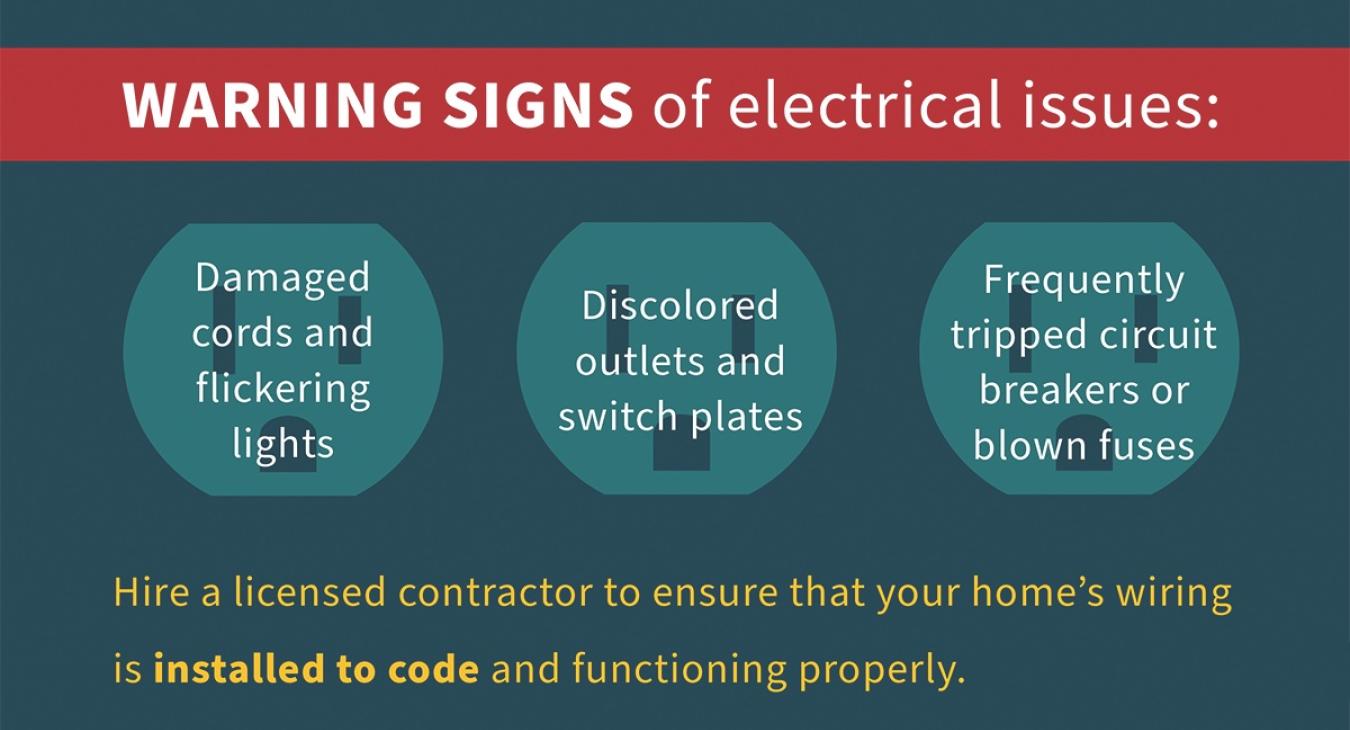Take steps to help prevent electrical fires by identifying possible issues before they occur.
When assessing your home, the first step is to hire a qualified electrician to check all wiring to ensure it is up to code and that the electrical system can handle the demands of your electronics, appliances, lights and other electrical needs. Beyond that, watch for possible issues as they arise.
Symptoms of issues include flickering lights, discolored outlets and switch plates, damaged cords, frequently tripped circuit breakers or blown fuses.
Check these electrically related items in your home:
• Electrical outlets: Check for loose-fitting plugs and loose wall receptacles. Replace missing or broken wall plates. If you have young children, install tamper-resistant outlets if your home does not have them. Avoid overloading outlets with adapters and too many appliance plugs.
• Ground fault circuit interrupters (GFCIs): Make sure GFCIs are installed in your kitchen, bathrooms, laundry room, workshop, basement, garage and outdoor outlets. GFCIs help protect against electrical shock. Use the Test and Reset buttons monthly to ensure that they are working properly.
• Cords: Check cords to ensure they are not frayed or cracked, placed under rugs, tightly wrapped around an object or located in high traffic areas. Do not nail or staple them to walls, floors or other objects.
• Extension cords: These are not intended to be permanent solutions, so use them temporarily. If you find that you need more electrical outlets, consult your electrician.
• Light bulbs: Verify that your light bulbs are the intended wattage for the lamp or fixture they are in.
• Appliances and electronics: If an appliance repeatedly blows a fuse, trips a circuit breaker or gives you an electrical shock, it is time to discard it and replace it with a new version. Use surge protectors to protect expensive electronics. Make sure your appliances and electronics are placed in dry locations.
• Circuit breakers/fuses: Check that circuit breakers are working properly. Fuses should be properly rated for the circuits they protect.
• Electrical wiring: If an outlet is not working, it may be an indicator of unsafe wiring. Also, check for loose wires and lighting fixtures. Listen for popping or sizzling sounds behind walls. If light switches are hot to the touch or lights spark and flicker, immediately shut them off at the circuit breaker and contact a qualified electrician to make repairs.
• Service capacity: If fuses blow or trip frequently, you may need to increase the capacity of your electrical service or add new branch circuits.
Source: SafeElectricity.org.
Be Proactive in Preventing Electrical Fires

